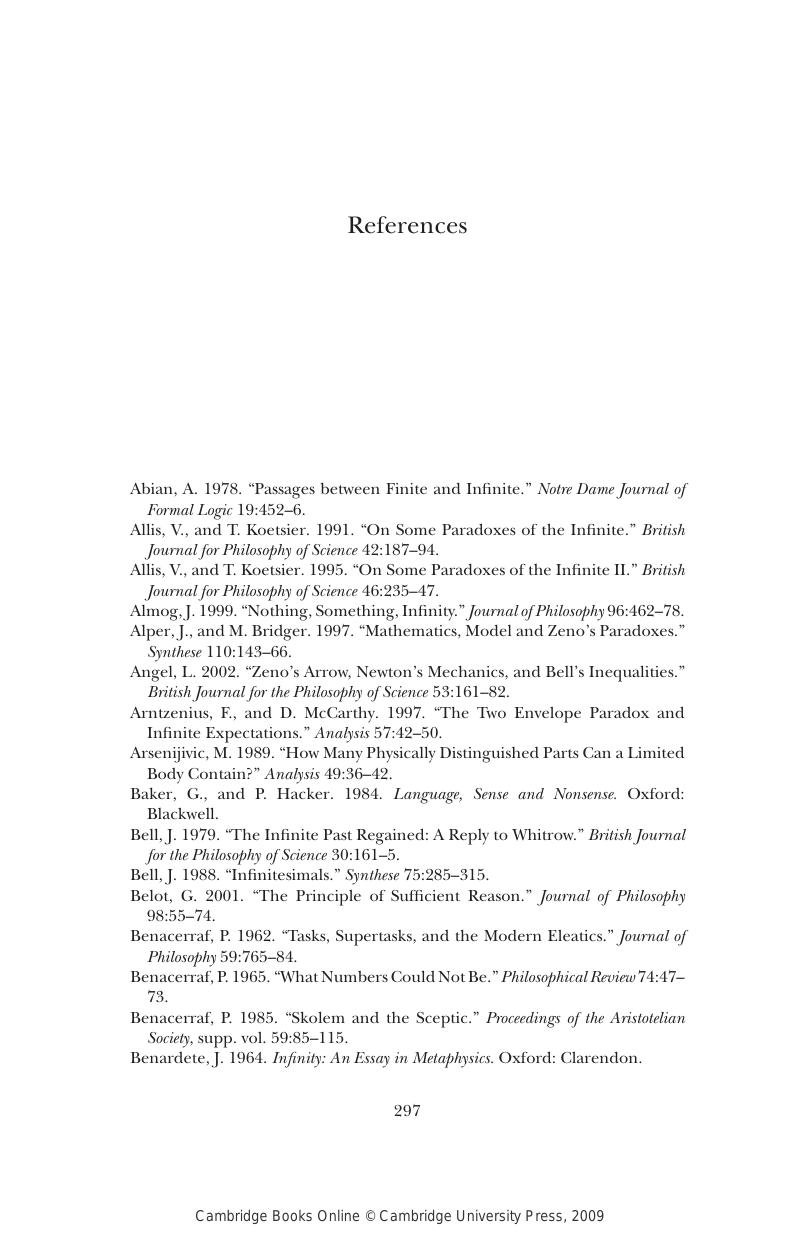Book contents
- Frontmatter
- Contents
- Preface
- Acknowledgments
- Introduction
- 1 Beginnings and Puzzles
- 2 Mathematical Preliminaries
- 3 Some Cases Discussed
- 4 Space, Time, and Spacetime
- 5 Physical Infinities
- 6 Probability and Decision Theory
- 7 Mereology
- 8 Some Philosophical Considerations
- 9 Infinite Regress and Sufficient Reason
- Conclusion
- References
- Index
- References
References
Published online by Cambridge University Press: 31 July 2009
- Frontmatter
- Contents
- Preface
- Acknowledgments
- Introduction
- 1 Beginnings and Puzzles
- 2 Mathematical Preliminaries
- 3 Some Cases Discussed
- 4 Space, Time, and Spacetime
- 5 Physical Infinities
- 6 Probability and Decision Theory
- 7 Mereology
- 8 Some Philosophical Considerations
- 9 Infinite Regress and Sufficient Reason
- Conclusion
- References
- Index
- References
Summary

- Type
- Chapter
- Information
- Philosophical Perspectives on Infinity , pp. 297 - 310Publisher: Cambridge University PressPrint publication year: 2006



